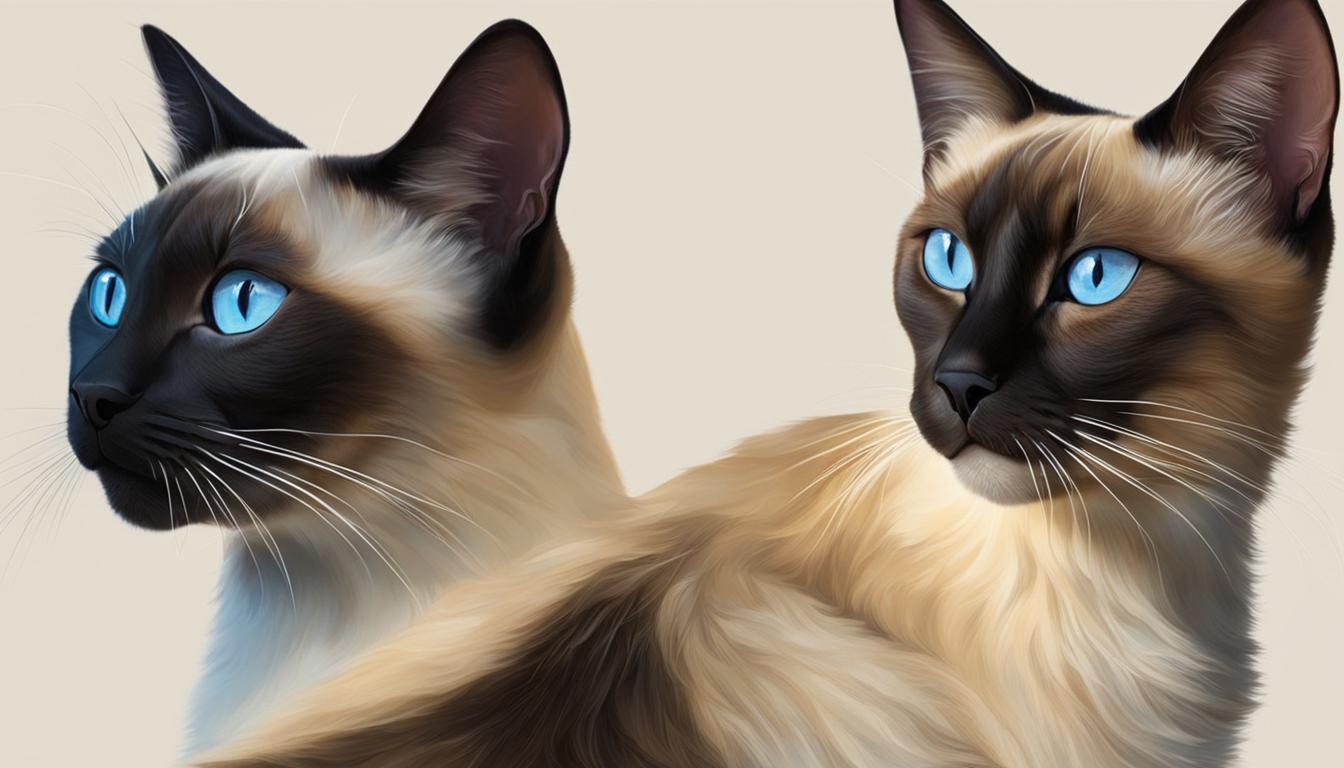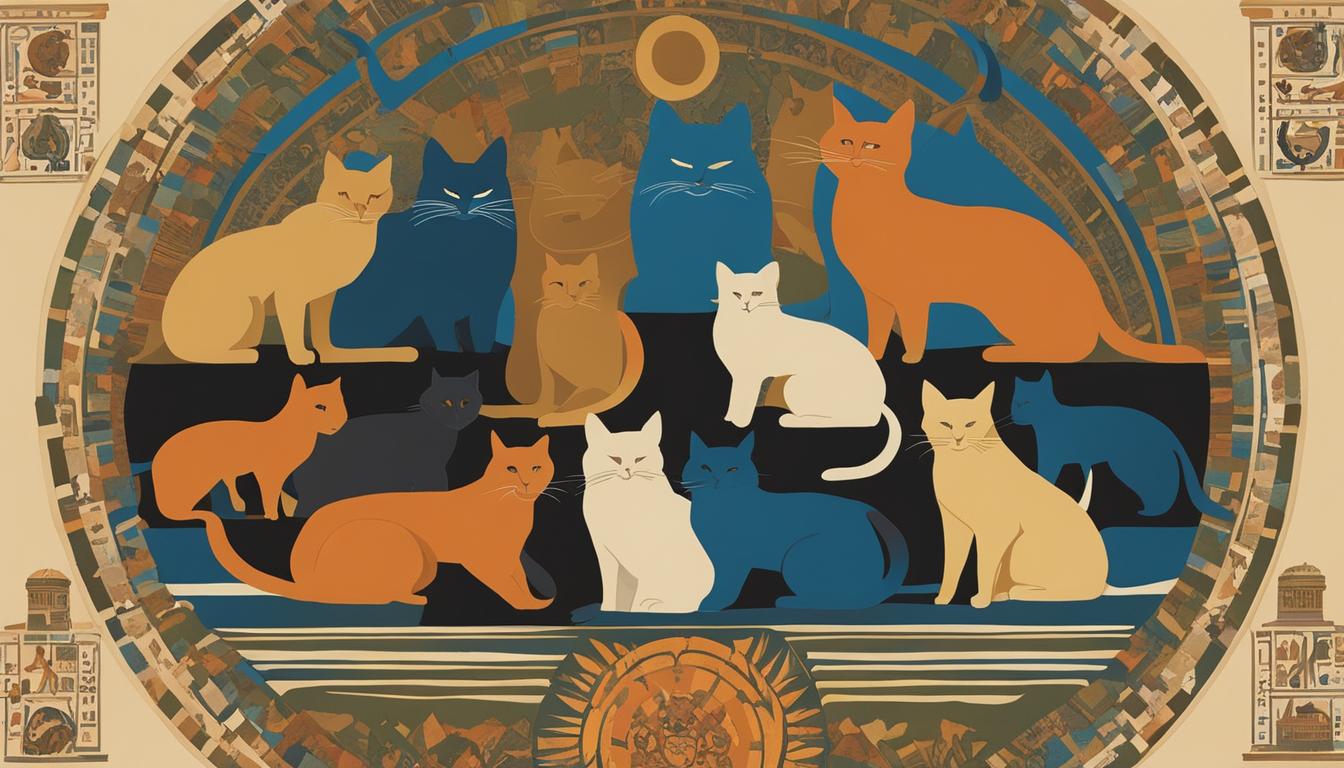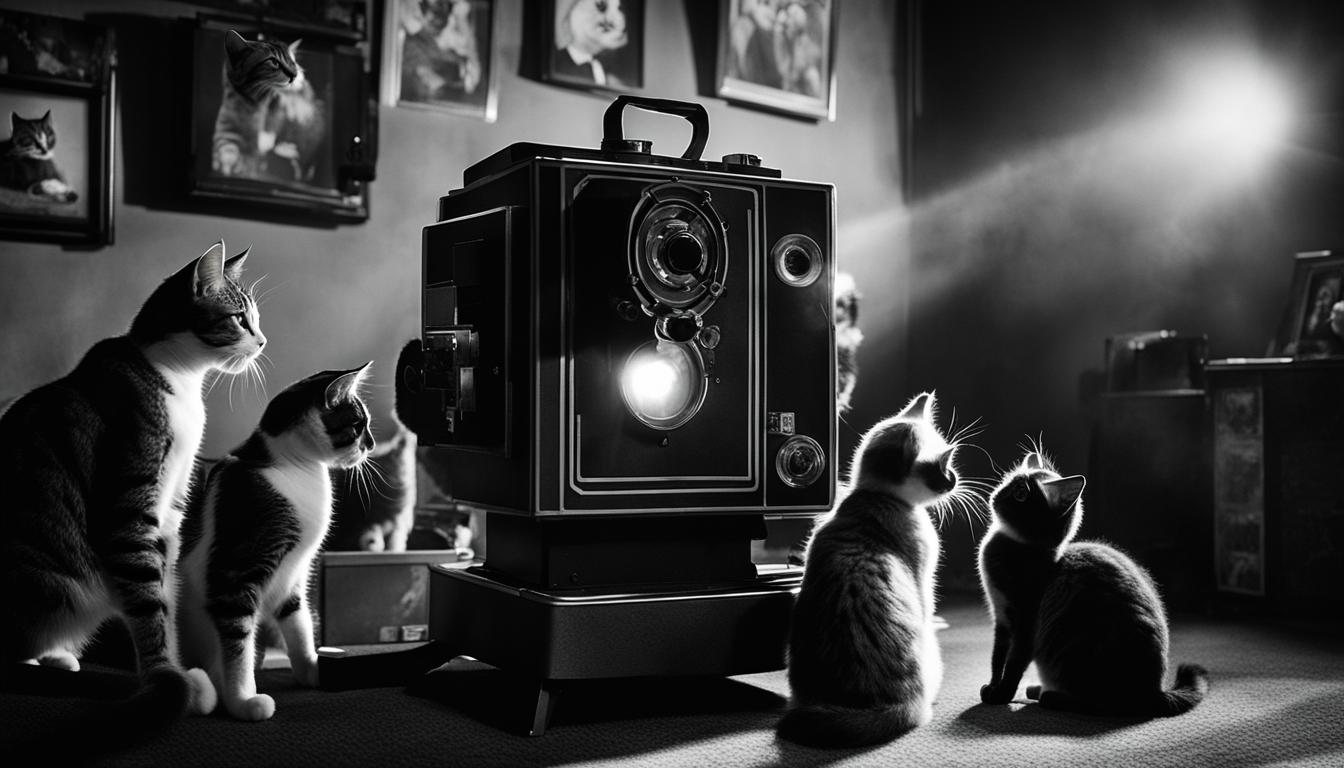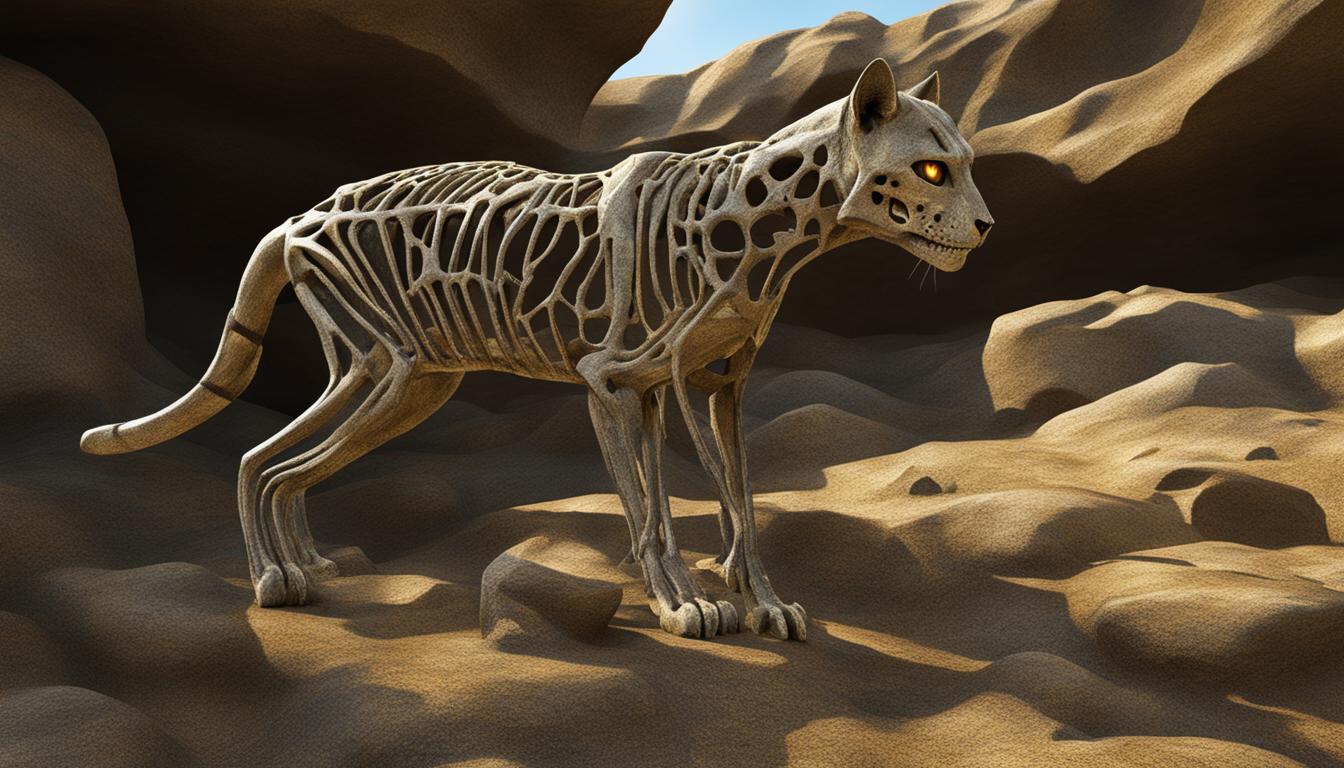As a lover of all things feline, I have always been fascinated by the unique and diverse world of cat breeds. From the elegant Siamese to the majestic Maine Coon, each breed tells a tale of centuries-old evolution and the remarkable relationship between cats and humans. Join me on a historical journey as we explore the origins and evolution of domestic cat breeds.
Key Takeaways:
- The domestication of cats began around 7500 BC in the Near East, where they formed a mutually beneficial relationship with early farmers.
- Cats played a vital role in pest control and provided companionship in exchange for food and protection.
- Genetic analysis has revealed that cats mostly domesticated themselves until around 100 BCE, with over 281 genes experiencing rapid mutations.
- Cats have undergone physical evolution through selective breeding for desired traits such as size, coat length, and color.
- The genetic diversity of domestic cats remains broad, with distinct clusters in the Mediterranean, Europe/America, Asia, and Africa.
The Genetics of Cat Domestication
Genetic analysis has played a crucial role in unraveling the mysteries surrounding the domestication of cats. Through extensive research, scientists have discovered fascinating insights into the genetic changes that occurred during the process of cat domestication.
One of the most intriguing findings is that cats domesticated themselves to a large extent. Genetic analysis has revealed that cats underwent rapid mutations in over 281 genes since the beginning of domestication. These mutations have had a significant impact on various aspects of a cat’s physiology and behavior, including hearing, metabolism, eyesight, and diet.
Furthermore, researchers have identified thirteen key genes responsible for a cat’s cognition and social behavior. These genes are involved in processes such as learning, memory, and the ability to recognize rewards and commands. Additionally, five genes influence the migration of stem cells in developing embryos, leading to changes in brain size, hunting ability, and fur patterns.
| Genes | Function |
|---|---|
| Glutamate receptors | Learning and memory |
| Taqpeq and Edn3 | Differentiation of domestic cat breeds |
These genetic insights offer a deeper understanding of how cats have evolved and adapted to their domesticated lifestyle, emphasizing the fascinating interplay between genetics and behavior in the domestication process.
The Physical Evolution of Cat Breeds
Cats have undergone significant physical evolution over the course of their domestication, thanks to the process of selective breeding. This breeding has been geared towards developing and enhancing specific traits, such as ear size, tail size, fur length, and coat color. Through careful mating and selection, breeders have been able to create a wide range of cat breeds with distinct appearances and characteristics.
One fascinating area of physical evolution in cats is the development of their vocalizations. In recent centuries, cats have evolved their meowing and chattering sounds to better communicate with humans. This adaptation is believed to have occurred as a response to humans’ increased presence and the need for effective communication between cats and their human companions.
Microsatellite markers have played a crucial role in studying the physical evolution of cat breeds. These markers allow researchers to analyze the genetic variation and diversity among different breeds. The use of microsatellite markers has revealed that pure breeding, while creating distinct breeds with specific traits, has also resulted in a loss of genetic diversity within individual breeds. However, this loss of diversity does not seem to correlate with breed popularity or age.
| Physical Traits | Examples of Breeds |
|---|---|
| Ear Size | Scottish Fold, American Curl |
| Tail Size | Manx, Japanese Bobtail |
| Fur Length | Persian, Maine Coon |
| Coat Color | Siamese, Bengal |
“Cats have truly transformed in appearance over the course of their domestication, thanks to the power of selective breeding. From the elegant Persian with its long, flowing fur to the sleek Siamese with its striking color points, each breed tells a unique story of physical evolution.”
As cats continue to evolve, breeders and researchers alike are fascinated by the intricate and often surprising changes that occur. Through a combination of genetic analysis, selective breeding, and careful observation, we gain a deeper understanding of the physical evolution of these beloved feline companions.
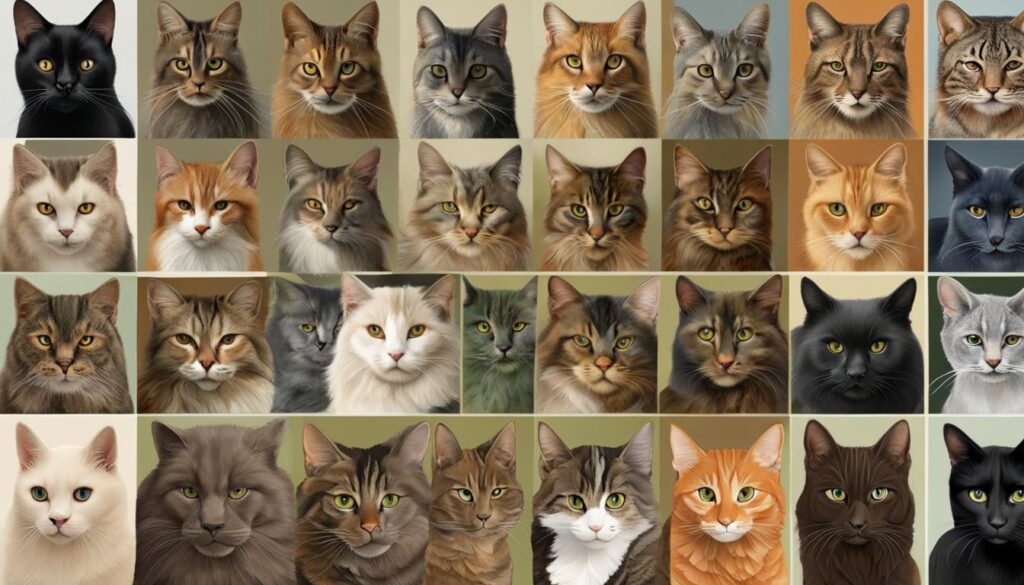
The Role of Microbiome in Cat Evolution
When it comes to the evolution of cats, their microbiome plays a crucial role. The microbiome refers to the collection of microorganisms living in the cat’s body, particularly in the gut, skin, and mouth. Research has focused on understanding the diverse bacteria found in a cat’s mouth and the implications for both the cat and its human companion.
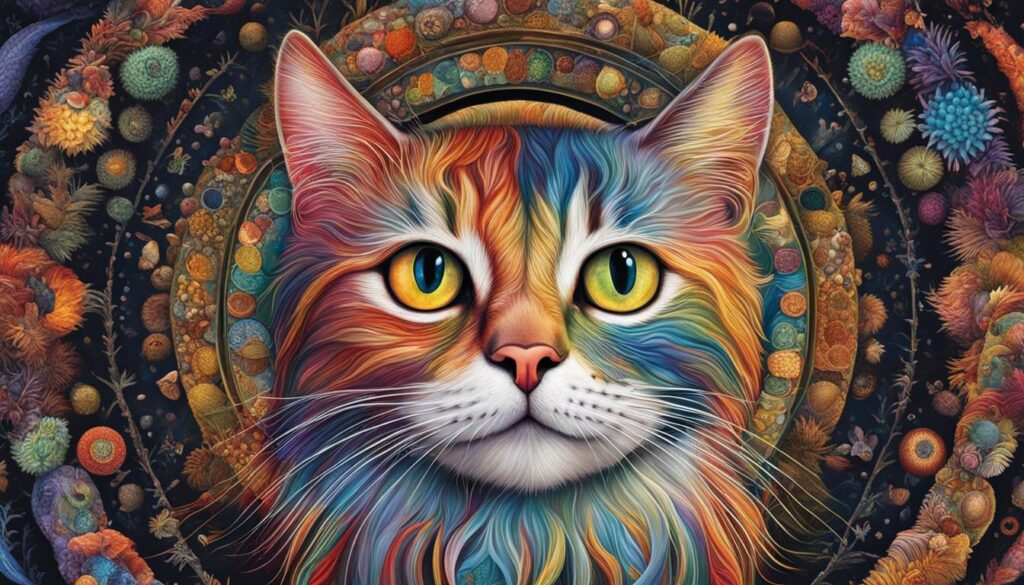
The Dangers of Pasteurella multocida
One of the bacteria commonly found in a cat’s mouth is Pasteurella multocida. While it is a normal part of a cat’s oral microbiota, it can pose risks, especially if a cat bites someone. Pasteurella multocida can cause staph infections and other skin issues when it enters the bloodstream through a bite wound. It is important for cat owners to be aware of the potential risks and take appropriate precautions to prevent and treat infections.
The Curious Cat Scratch Disease
Another bacteria associated with cats is Bartonella henselae, which is responsible for causing the “cat scratch disease.” This disease is transmitted to humans through scratches or bites from infected cats. It can lead to symptoms such as swelling, redness, fever, and irritation. Although cat scratch disease is relatively rare, it is important for individuals to seek medical attention if they experience these symptoms after being scratched or bitten by a cat.
Microbiome Sharing Between Cats and Humans
Despite the potential risks, there is evidence to suggest that cats and humans share their microbiomes. Prolonged exposure to cats, particularly from a young age, can result in the sharing of nasal, intestinal, and skin microbiomes. This mutual exchange enriches and diversifies the microbiomes of both cats and humans, potentially contributing to better overall health.
| Cat Microbiome | Human Microbiome | |
|---|---|---|
| Nasal | Shared with humans | Shared with cats |
| Intestinal | Shared with humans | Shared with cats |
| Skin | Shared with humans | Shared with cats |
These findings highlight the fascinating relationship between cats and humans and the influence of their microbiomes on each other’s health. Further research is needed to fully understand the extent and implications of microbiome sharing between cats and humans.
Tracing the Journey of Cats through Genetic Studies
Genetic studies have played a crucial role in unraveling the fascinating migration patterns of cats from their presumed site of domestication in the Middle East to different regions of the world. By analyzing the genetic diversity and similarities among cat populations, researchers have been able to uncover phylogeographic patterns and gain insights into the evolutionary history of domestic cats.
One of the key findings from genetic studies is the presence of distinct genetic clusters in different parts of the world. The Mediterranean basin, believed to be the original site of domestication, still holds a wide genetic diversity among its cat populations. Similarly, clusters have been identified in Europe/America, Asia, and Africa, each representing unique genetic lineages and adaptations.
To further understand the migration and dispersal of cats, researchers have examined the genetic composition of different cat breeds. While most breeds are derived from the indigenous cats of their respective regions, some breeds show closer genetic affinity to specific clusters. For instance, the Persian and Japanese Bobtail breeds align more closely with the European/American cluster, indicating possible migration and interbreeding between different populations.
| Region | Genetic Cluster | Representative Cat Breeds |
|---|---|---|
| Mediterranean Basin | Cluster A | Aegean, Turkish Van |
| Europe/America | Cluster B | Persian, Maine Coon |
| Asia | Cluster C | Siamese, Bengal |
| Africa | Cluster D | Abyssinian, Somali |
It’s important to note that while selective breeding has led to the creation of distinct cat breeds, it has also resulted in a loss of genetic diversity. However, this loss does not necessarily correlate with breed popularity or age. The genetic studies have given us a deeper understanding of how cats have dispersed and adapted to different environments, shaping the diverse range of breeds we see today.
Unraveling the Origins of Domestic Cats
When it comes to the origins of domestic cats, the prevailing belief was that ancient Egypt played a significant role. However, recent genetic and archaeological discoveries have shed new light on this fascinating topic. Genetic analysis has revealed that the Middle East, rather than Egypt, is likely the geographical origin of domestic cats.
Archaeological evidence from the island of Cyprus, dating back 9,500 years, suggests that humans were keeping cats as pets in the Middle East during the Neolithic period. This finding indicates that the taming of cats coincided with the establishment of settlements in the Fertile Crescent. The unique characteristics of wildcats, coupled with the abundance of food sources and opportunities for scavenging in human settlements, likely contributed to the development of a special relationship between cats and humans.
As we delve deeper into the genetic ancestry of domestic cats, it becomes apparent that ancient Egyptian cats, while highly revered in their time, may not have played a central role in the domestication process. Instead, it was the early farmers in the Near East who formed a mutually beneficial relationship with cats. These feline companions provided pest control and companionship, while humans offered food and protection. This symbiotic bond propelled the domestication of cats and their subsequent spread across the world.
“The Middle East, rather than Egypt, is likely the geographical origin of domestic cats.”
The Mystery Continues
While we have made significant strides in unraveling the origins of domestic cats, many questions still remain. For instance, how did cats manage to domesticate themselves? What factors contributed to their remarkable genetic diversity? These are just a few of the intriguing mysteries that continue to captivate scientists and enthusiasts alike.
Through ongoing genetic research and archaeological excavations, we hope to uncover even more clues about the fascinating journey of domestic cat evolution. By studying their genetic ancestry and unraveling the ancient connections between humans and cats, we gain a deeper appreciation for the rich history and enduring bond that exists between these remarkable creatures and ourselves.
| Key Points |
|---|
| Recent genetic analysis suggests that the Middle East, rather than Egypt, is likely the geographical origin of domestic cats. |
| Archaeological evidence from the island of Cyprus indicates that humans were keeping cats as pets in the Middle East during the Neolithic period. |
| The unique characteristics of wildcats and the opportunities provided by human settlements likely played a crucial role in the domestication of cats. |
| Ongoing research aims to shed more light on the mysteries surrounding the self-domestication of cats and their genetic diversity. |
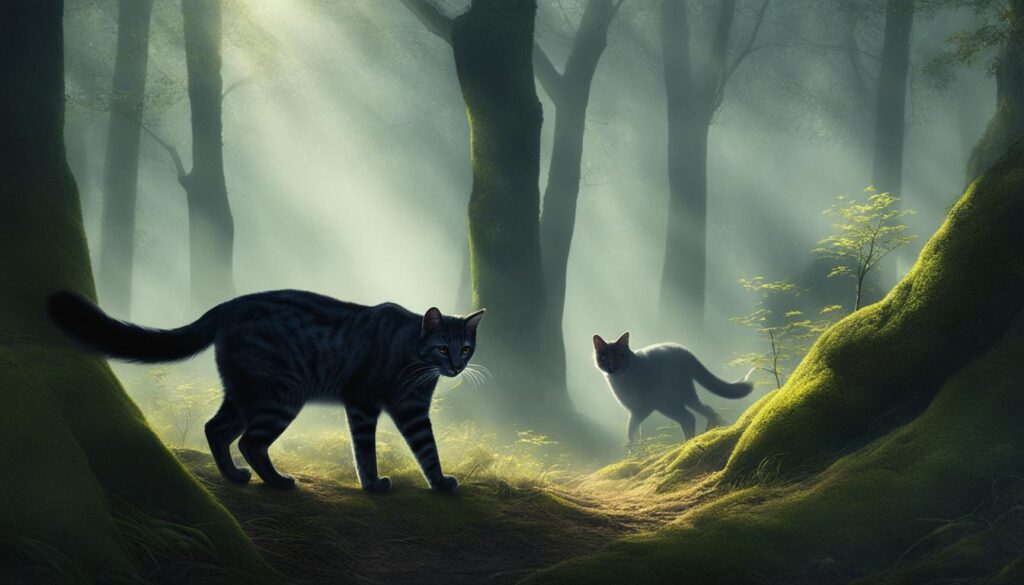
The Curious Relationship Between Humans and Cats
Cats have always intrigued and captivated humans with their mysterious and independent nature. The curious relationship between humans and cats is a fascinating subject to explore. Unlike other domesticated animals, cats were not purposefully bred for specific tasks or traits. They chose to coexist with humans, and their appeal lies in their adaptability and self-reliance.
Although cats are solitary hunters by nature, their interactions with humans date back thousands of years. The taming of cats likely occurred during the Neolithic period when early settlements created a new environment for wildcats to exploit. Cats discovered that living near humans provided abundant food sources and opportunities for hunting mice, which led to their proliferation in villages and towns. This initial cohabitation laid the foundation for the symbiotic relationship we see today.
“Cats are connoisseurs of comfort.” – James Herriot
The appeal of cats lies in their enigmatic behavior and their ability to retain their independence while forming bonds with their human companions. Their hunting instincts and self-sufficiency make them alluring, as they retain their wild instincts in a domestic setting. Unlike dogs, cats do not rely on humans for their every need, which adds to their mysterious allure. Their ability to communicate through subtle body language and vocalizations further deepens the bond between humans and cats.
The Appeal of Felid Behavior
Felid behavior, such as kneading, purring, and head-bumping, is another aspect that contributes to the appeal of cats. These behaviors are believed to have evolved as communication tools to establish social bonds and mark territory. Kneading, for example, is reminiscent of the motion kittens make when nursing, indicating comfort and contentment. Purring is not only a sign of pleasure but also serves as a form of self-soothing during stressful situations.
| Cat Appeal | Reason |
|---|---|
| Independence | Cats are self-reliant and retain their hunting instincts, making them intriguing companions. |
| Mysterious Behavior | The enigmatic behavior of cats, such as purring, kneading, and head-bumping, adds to their charm. |
| Communication Skills | Cats have subtle body language and vocalizations that help them bond with humans and establish territory. |
Cats have truly carved a unique place in our lives, blending their innate independence with their ability to form deep connections with humans. Their appeal lies in their mysterious behavior, felid instincts, and adaptability to cohabitate with humans. Perhaps it is this delicate balance between independence and companionship that has made cats such beloved pets worldwide.
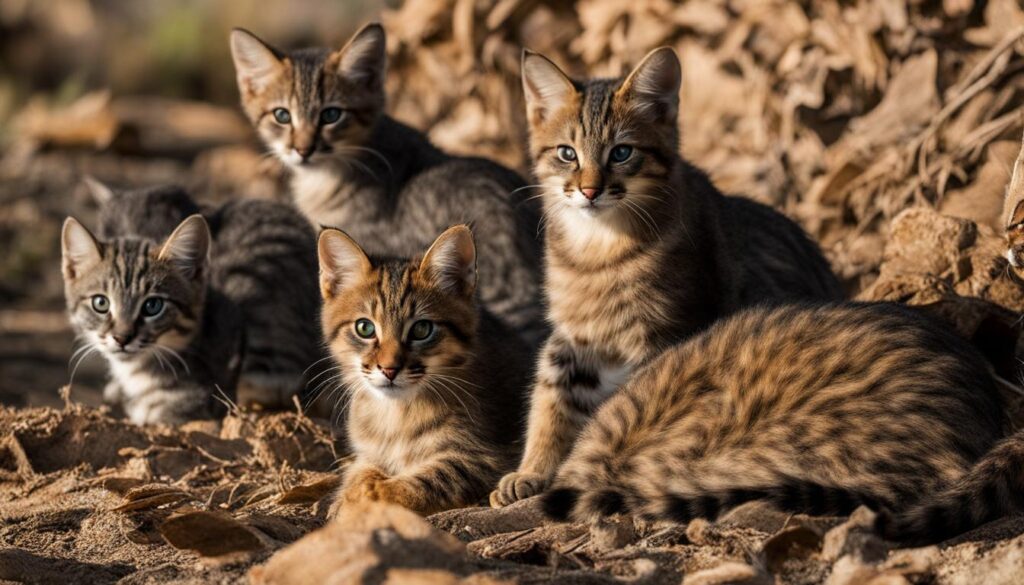
Conclusion
So there you have it, the fascinating journey of cat breed evolution from the beginning of time. I must say, it’s quite impressive how these furry creatures have shaped their own destiny alongside us humans.
From their humble beginnings in the Near East, where they formed a mutually beneficial relationship with early farmers, to their expansion across the world through shipping lines, cats have always found a way to make their mark. They provided pest control and companionship, and in return, received food and protection.
Through genetic analysis, we have uncovered the changes in genes that have shaped their physical and cognitive abilities over thousands of years. The selective breeding for desired traits has resulted in the wide range of cat breeds we see today, each with its unique appearance and temperament.
But let’s not forget the role of their microbiome, the world of bacteria living within them. Cats have not only enriched their own microbiomes but have also shared them with us humans. And isn’t it fascinating to think that this sharing has led to the diversification of our own microbiomes?
So, as we trace the migration patterns of cats from their origins in the Middle East to different parts of the world, let’s appreciate the unique bond they share with us. Despite their domestication, cats have retained their independent nature and hunting instincts. And as they continue to evolve and new breeds emerge, one thing’s for sure – cats will always have a special place in our hearts.
FAQ
What is the origin of domestic cat breeds?
Domestic cat breeds originated around 7500 BC in the Near East, where cats developed a mutually beneficial relationship with early farmers.
How did cats become domesticated?
Cats became domesticated by providing pest control and companionship in exchange for food and protection from early farmers.
How did domestic cats spread across the world?
Domestic cats spread across the world through shipping lines, with genetic analysis revealing distinct genetic clusters in different regions.
How have domestic cats evolved genetically?
Genetic analysis has shown that cats mostly domesticated themselves until around 100 BCE, with over 281 genes experiencing rapid mutations since the beginning of domestication.
What physical traits have been selectively bred in domestic cats?
Selective breeding has resulted in the development of desired traits such as size, coat length, and color in domestic cat breeds.
How has the genetic diversity of domestic cats been affected by breeding?
Pure breeding has resulted in a loss of genetic diversity, but this does not correlate with breed popularity or age.
What is the role of a cat’s microbiome in its evolution?
Research has shown that cats and humans can share their microbiomes, enriching and diversifying them through prolonged exposure.
Where did domestic cats originate?
Recent genetic and archaeological discoveries suggest that domestic cats originated in the Middle East, rather than ancient Egypt.
Why did cats choose to live among humans?
Cats most likely chose to live among humans due to the opportunities they found in human settlements, such as abundant food sources and mice.
Have domestic cats retained their hunting abilities?
Despite their domestication, most cats retain their independent nature and hunting abilities.

